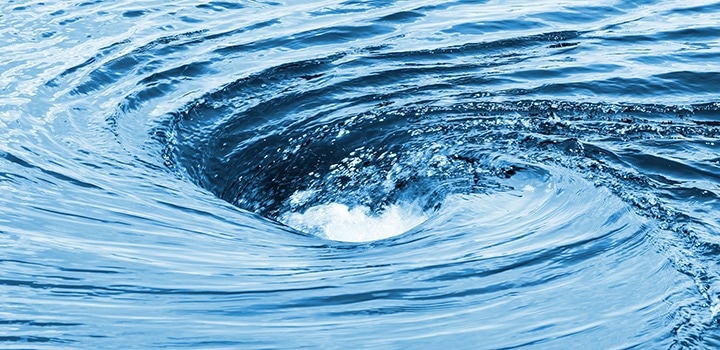An unprecedented new class of vortices - the whirling masses of fluid or air - has been discovered and studied by an international team of scientists.

Image Credit: Getty Images
Their new paper describes the first laboratory studies of these “exotic” whirlpools in an ultracold gas of atoms at temperatures as low as tens of billionths of a degree above absolute zero, and the study was led by scientists from Amherst College in the U.S., the University of East Anglia, and Lancaster University in the UK.
The finding, which was published this week in the journal Nature Communications, might have fascinating long-term repercussions for the application of quantum information and computers.
Natural phenomena like the wind surrounding a hurricane or the whirlpools of water down a bathtub drain are examples of vortices.
In quantum-mechanical systems, such as an atomic Bose-Einstein condensate, the circulation occurs in discrete, quantized units, and the vortices are often small. These vortices have long fascinated scientists and have shed light on the peculiar characteristics of superfluidity and superconductivity.
However, in this case, symmetries in the quantum gas give the observed whirlpools their peculiar characteristics. The formation of asymmetrical universes despite flawless underlying symmetries is a particularly intriguing characteristic of scientific theories, from cosmology to fundamental particles.
For instance, disordered molecules in a liquid organize themselves into a periodic pattern when it freezes to form ice.
A system’s spatial symmetry is usually easy to spot; for instance, a honeycomb has a regular arrangement of cells with hexagonal symmetry. Despite being fluid rather than a solid array, the vortex medium employed in this new work also has many intrinsic hidden discrete symmetries.
For example, two of the team’s ultracold gases had the tetrahedral symmetry of a four-sided die, which is well-known to players of fantasy games everywhere, and another had the fourfold symmetry of a square.
The mass flow and the underlying symmetry of the fluid interact with one another in interesting ways. One consequence is that if the positions of two vortices are interchanged, they can leave a trace of the process lingering in the fluid. This trace links the interacting vortices together permanently, like a rung in a ladder.
Dr. Magnus Borgh, Associate Professor, Physics, University of East Anglia
Professor Janne Ruostekoski of Lancaster University added, “No ordinary fluids behave like this, and it may be that analogous objects only exist deep inside neutron stars.”
In fact, according to scientists, these newly produced vortices surpass the state-of-the-art.
It is partly these connections to the stranger domains of physics that makes our work appealing. And partly it is our human appreciation of symmetry.
David Hall, Professor, Amherst College
Direct observation of these behaviors is the primary objective of the team’s study, the experimental part of which is being held at Amherst College.
Particularly crediting the lead author of the study Arthur Xiao, Hall added, “We are fortunate to have extremely talented and dedicated students who can do these kinds of challenging experiments.”
Journal Reference:
Xiao, Y., et al. (2022) Topological superfluid defects with discrete point group symmetries. Nature Communications. doi:10.1038/s41467-022-32362-5